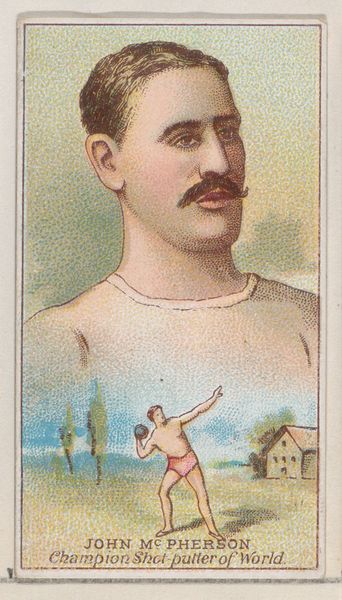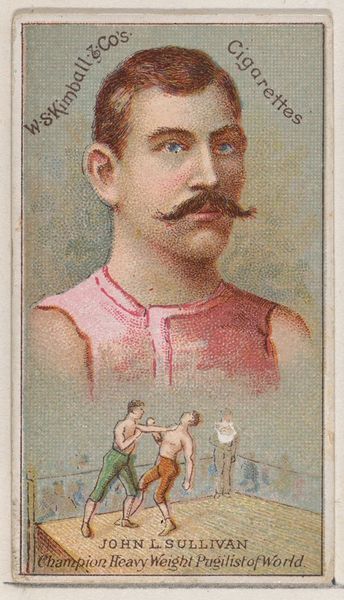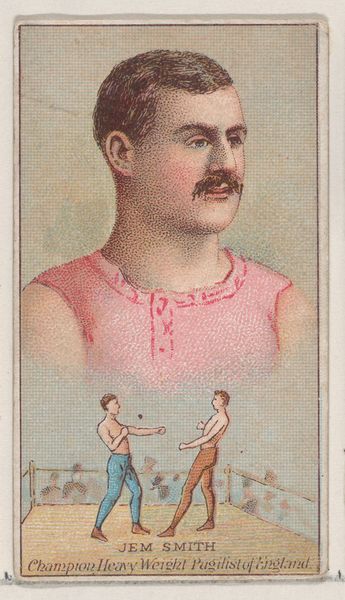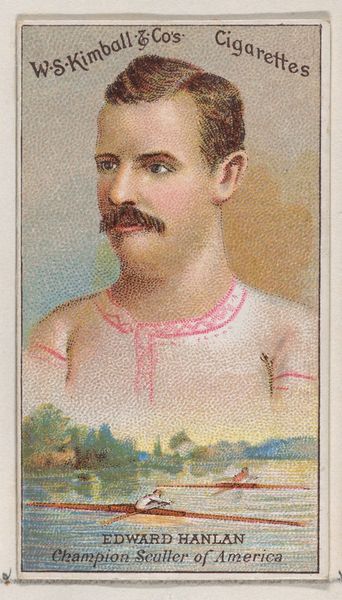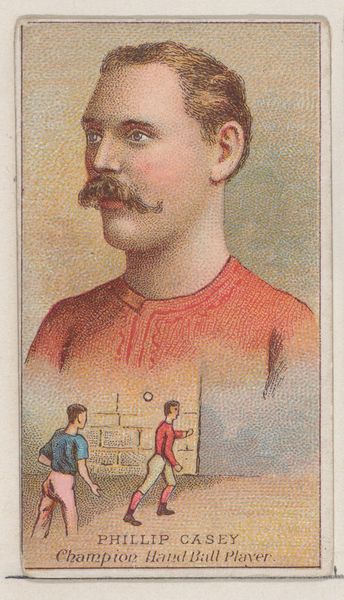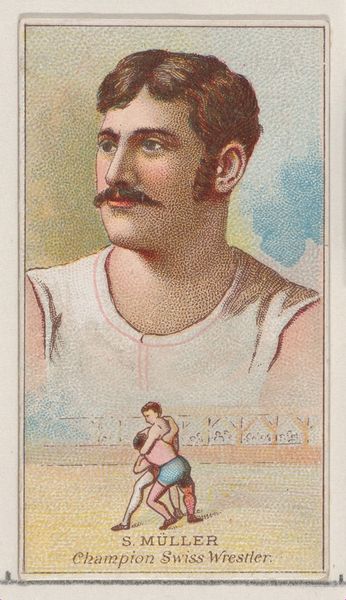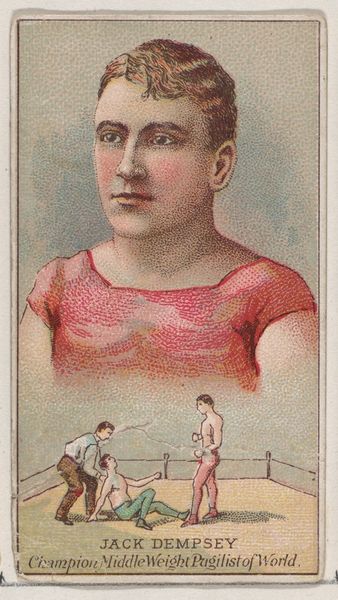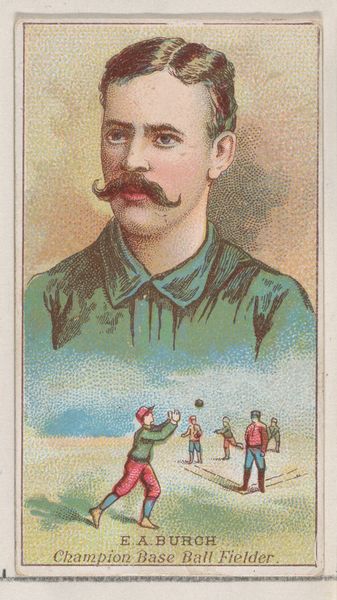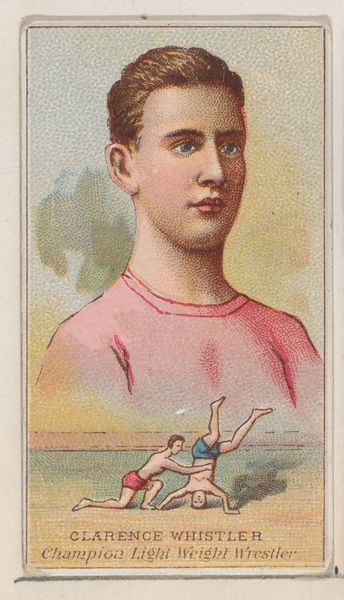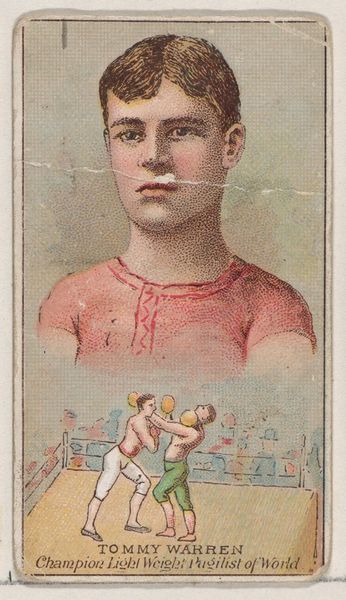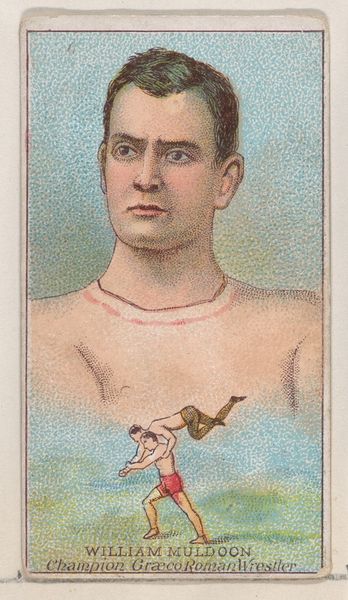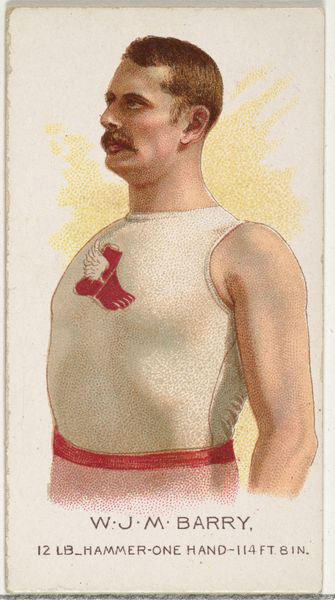
Patsy Cardiff, Champion Giant Pugilist, from the Champions of Games and Sports series (N184, Type 2) issued by W.S. Kimball & Co. 1887
0:00
0:00
drawing, graphic-art, print, poster
#
portrait
#
drawing
#
graphic-art
# print
#
impressionism
#
figuration
#
men
#
genre-painting
#
history-painting
#
athlete
#
poster
#
portrait art
Dimensions: Sheet: 2 11/16 × 1 1/2 in. (6.8 × 3.8 cm)
Copyright: Public Domain
Editor: Here we have "Patsy Cardiff, Champion Giant Pugilist," a print from 1887 by W.S. Kimball & Co. It’s this small card, seemingly mass-produced, depicting a boxer. What strikes me is the contrast between the almost stately portrait at the top and the raw action scene below. What do you see in this piece beyond a simple depiction of a sports figure? Curator: It’s interesting to consider this as a piece of popular culture, meant for mass consumption. Think about the context: late 19th century America, burgeoning industries, and a fascination with celebrity, even in sports. These cards, distributed with products like cigarettes, weren’t just about advertising. They were about creating and circulating images of masculinity and heroism. This card helped to democratize the image of the hero. Editor: So it's about access and image dissemination? What would that imagery signify for contemporary audiences? Curator: Exactly. Patsy Cardiff, whoever he was, becomes an icon, a readily available image of strength and skill. And note how he’s presented: a formal portrait above, a somewhat romanticized depiction of the fight itself below. This reflects a broader societal tension: the working class's rise and the aristocratic view that athleticism could demonstrate strength but that should also demonstrate self-governance. Who has access to this vision, who gets to decide what makes a proper hero? What's excluded in the representation of masculinity when this type of hero is marketed on cigarette cards? Editor: That's fascinating, it changes how I look at something so simple. Thinking about what images are elevated and how is vital to analyzing the impact this would have had. Curator: Absolutely. By understanding the socio-political forces at play, we move beyond the surface and engage with the deeper meaning and the mechanisms of fame itself. This one small card suddenly reveals a whole world of historical meaning.
Comments
No comments
Be the first to comment and join the conversation on the ultimate creative platform.
